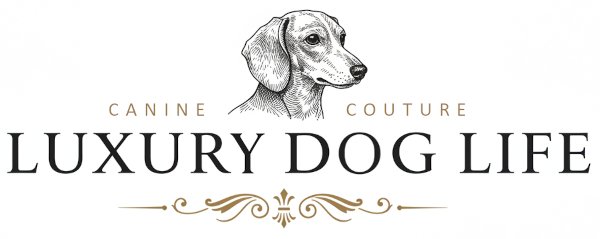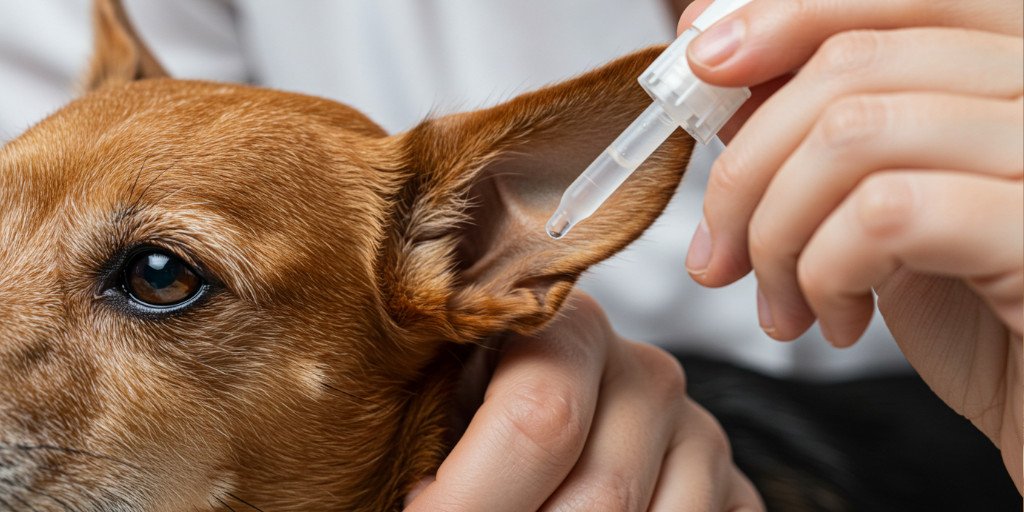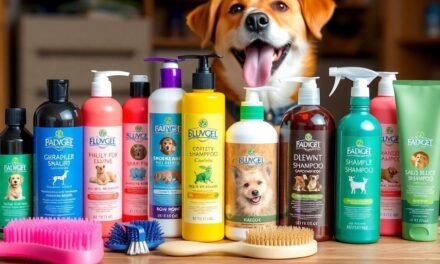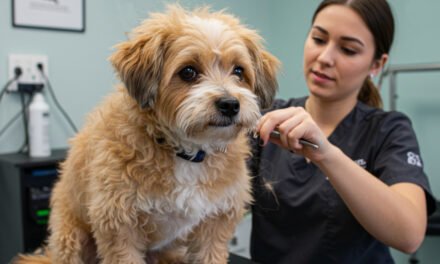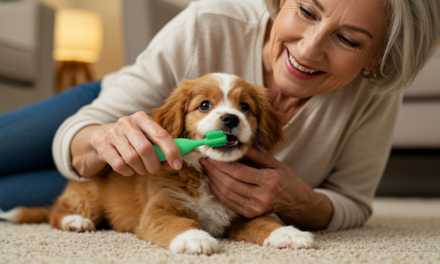Taking care of your dog’s ears is super important, even if it’s not the most exciting part of pet ownership. It’s one of those things that can really make a difference in your dog’s health. Ear infections or irritations can sneak up on you if you’re not paying attention. Regular cleaning can help keep those issues at bay, plus it’s a nice way to bond with your furry friend. You don’t need fancy tools or products either—just a bit of time and patience. And hey, if you’re unsure, there’s always a vet to help out.
Key Takeaways
-
Understand your dog’s ear anatomy to clean effectively and prevent issues.
-
Regularly check your dog’s ears for signs of infection or dirt buildup.
-
Choose the right cleaning products, avoiding harsh chemicals.
-
Make the cleaning process calm and positive for your dog.
-
Consult a vet if you notice any signs of discomfort or infection.
Understanding Your Dog’s Ear Anatomy
Alright, folks, let’s dive into the fascinating world of dog ears. I know, it might not sound like the most thrilling topic, but trust me, it’s more intriguing than you’d think.
The Structure of a Dog’s Ear
Did you know that a dog’s ear is shaped like an “L”? Yep, it’s like a little maze in there! This unique shape, including the external acoustic meatus, is why cleaning them can be a bit of a challenge. The ear canal is long and makes a sharp 90-degree turn, which keeps the eardrum safely tucked away from the outside world. This means there’s less risk of accidentally harming your pup’s eardrum while cleaning.
Why Ear Anatomy Matters in Cleaning
Understanding this “L” shape is crucial when it comes to cleaning. We can’t just dive in there with a Q-tip like we might with our own ears. Instead, we need to use gentle cleansers that can make their way around those bends. It’s all about working with the anatomy, not against it!
Common Ear Problems in Dogs
Now, let’s talk about the not-so-fun stuff. Dogs can have a variety of ear issues, from infections to pesky mites. Some breeds, especially those with long, floppy ears like Cocker Spaniels, are more prone to these problems. Regular checks and cleanings can help keep these issues at bay.
Remember, a dog’s ear should look light pink and be free of dirt or inflammation. If you notice anything unusual, it might be time to consult your vet.
Signs Your Dog’s Ears Need Cleaning
Recognizing Healthy Ears
Alright, fellow dog lovers, let’s chat about what healthy dog ears look like. Picture this: your pup’s ears should be a lovely shade of pink inside, not red or inflamed. They should be free of any gunk or discharge. No funky smells either! A healthy ear smells, well, like nothing at all. If your dog’s ears are looking a little grimy or emitting a not-so-pleasant odor, it might be time to grab the ear cleaner.
Symptoms of Ear Issues
Now, let’s dive into the not-so-fun stuff. If you spot your dog shaking their head more than usual, scratching at their ears, or if the ears seem tender to the touch, these are red flags. Other signs include redness, swelling, or a discharge that’s yellowish or brown. And let’s not forget about the smell—if it’s yeasty or just downright stinky, it’s time to take action. Sometimes, our furry pals might even tilt their head or seem off-balance. Trust us, it’s not just them trying to look cute.
When to Consult a Vet
So, when is it time to call in the pros? If you notice severe symptoms like persistent redness, swelling, or if your dog is in obvious pain, don’t wait. These could be signs of an infection, and cleaning might make it worse. We’ve all been there, trying to fix things ourselves, but sometimes it’s best to leave it to the experts. If your dog’s ears don’t improve after a gentle cleaning, or if they seem to be getting worse, a visit to the vet is in order. They’ll guide you through the next steps and ensure your pup’s ears are back to their happy, healthy selves in no time.
Keeping an eye on your dog’s ear health is like having a superpower. Catching issues early can save your furry friend from discomfort and keep those tails wagging!
Choosing the Right Ear Cleaning Products
Avoiding Harmful Ingredients
Alright, folks, let’s dive into the nitty-gritty of picking ear cleaning products for our fur babies. First things first, avoid anything with alcohol, steroids, or antibiotics. These can irritate or dry out your dog’s ears. Instead, look for products specifically designed for dogs. A quick chat with your vet can help steer you in the right direction.
Recommended Ear Cleaners
We all want the best for our pups, right? So, when it comes to ear cleaners, it’s good to stick with vet-approved brands. These are usually available at your vet’s office or local pet store. They might cost a bit more, but trust me, it’s worth it for the peace of mind. Plus, you get to avoid the dreaded vet visit for an ear infection.
Homemade vs. Store-Bought Solutions
Now, I know some of us love a good DIY project, but when it comes to ear cleaning solutions, homemade isn’t always the best route. Many online recipes can contain harmful ingredients. If you’re set on going the DIY route, make sure to do thorough research and consult with your vet. But honestly, sticking with store-bought options is usually safer and more effective.
Remember, keeping our pups’ ears clean isn’t just about hygiene; it’s about making sure they’re comfortable and happy. A little care goes a long way in preventing problems down the road. So let’s keep those tails wagging and ears clean!
Preparing for the Ear Cleaning Process

Gathering Your Supplies
Alright, folks, let’s get ready to tackle the task of cleaning our dog’s ears. First things first, we need to gather our supplies. Think of it like getting ready for a mini spa day for your pup. Here’s what we need:
-
Cotton balls or gauze: These are your best friends for gently cleaning those ears.
-
Dog-specific ear cleaning solution: Make sure it’s safe and vet-approved.
-
A clean, dry towel: Trust us, you’ll need it.
Avoid using cotton swabs or anything pointy. We don’t want to risk poking too far and causing any harm.
Creating a Calm Environment
Now, let’s set the scene. We all know how our dogs can be—one minute they’re chill, and the next, they’re bouncing off the walls. Aim to clean their ears when they’re relaxed, maybe after a long walk or a play session. A calm dog is a cooperative dog.
-
Pick a quiet spot, perhaps the bathroom or a mudroom.
-
Keep treats handy. Positive reinforcement works wonders.
-
Talk to them in a soothing voice, like you’re sharing a secret.
Safety Precautions to Consider
Safety first, right? We want this to be a safe and smooth process for both us and our furry pals.
-
Wash your hands before and after the cleaning. Hygiene is key.
-
If you’re feeling a bit squeamish, wear gloves.
-
Be gentle. We’re not digging for treasure here, just a light clean.
Remember, the goal is to make ear cleaning a positive experience. If things get messy, which they probably will, just laugh it off and keep going. Our dogs are worth it!
Step-by-Step Guide to Cleaning Your Dog’s Ears
Alright, folks, let’s dive into the nitty-gritty of ear cleaning. It’s one of those essential tasks, kind of like brushing your teeth—but for your pup! Here’s how we tackle it.
Positioning Your Dog Comfortably
First things first, getting your dog to chill out is half the battle. We all know how our furry friends can be little wiggle worms. So, find a cozy spot where your pooch feels at ease. Maybe it’s their favorite corner of the living room or a spot on the porch. The key is to make them feel safe and relaxed. Sometimes, a few belly rubs or a gentle massage can do wonders. Remember, we’re aiming for a spa day vibe, not a wrestling match!
Applying the Cleaning Solution
Now, let’s talk about the cleaning solution. We want something gentle, nothing with harsh chemicals. Think of it like choosing a shampoo for your own hair—you wouldn’t want anything that stings or irritates! With your dog lying on their side, gently open their ear and fill it with the solution. You should see the liquid pooling in there, and that’s your cue to give the base of their ear a little massage. It’s like a mini ear massage, and you’ll hear a satisfying squish sound.
Proper Techniques for Wiping
After the massage, let your dog shake their head. It’s going to get messy, so have a towel ready! Think of it as a mini rainstorm in your house. Once they’ve shaken out the excess, take a cotton ball or a piece of gauze, wrap it around your finger, and gently wipe away the debris. Remember, no deeper than one knuckle! We’re cleaning, not spelunking. If your dog seems uncomfortable, ease up and try again later.
Cleaning your dog’s ears might seem daunting at first, but think of it as a bonding experience. It’s another way we show our pups we care. And hey, if all else fails, there’s always the vet or a professional groomer to lend a hand.
And there you have it, a squeaky clean ear and a happy pup! Just don’t forget to reward your dog with a treat or two for being such a good sport. Happy cleaning!
Common Mistakes to Avoid
Using the Wrong Tools
Let’s face it, we’ve all been there—thinking we can MacGyver our way through a task with whatever’s lying around. But when it comes to cleaning our dog’s ears, using the wrong tools can spell trouble. Forget about those Q-tips or anything sharp. Stick to soft cotton balls or gauze. You want something gentle that won’t irritate or damage the sensitive ear canal. And please, no alcohol-based solutions! They might work wonders on our countertops, but in a dog’s ear? Total no-go. Instead, opt for gentle cleaning solutions designed for pets.
Over-Cleaning the Ears
We get it, cleanliness is next to dogliness. But over-cleaning your dog’s ears can actually do more harm than good. You ever scrubbed a pan so hard you took off the non-stick coating? Yeah, it’s kinda like that. Cleaning too often can strip away natural oils, leading to dryness and irritation. So, how often should you clean? Well, it depends on your pup’s breed and lifestyle. But a good rule of thumb is to clean them only when they look dirty or have a funky smell.
Ignoring Signs of Discomfort
Picture this: You’re deep into cleaning mode, and your dog starts squirming like a worm on a hot sidewalk. Ignoring their discomfort is a big mistake. Dogs have a way of telling us when something’s up, and it’s crucial to listen. If your dog seems uneasy, take a break and try again later. Maybe offer a treat or two as a peace offering. And if you notice redness, swelling, or a bad odor, it might be time to consult the vet. After all, we’re not just cleaning ears; we’re caring for our best friends.
It’s easy to think we’re doing the right thing by cleaning our dog’s ears frequently, but sometimes less is more. Let’s keep our furry pals comfy and healthy by avoiding these common pitfalls.
How Often Should You Clean Your Dog’s Ears?

Factors Affecting Cleaning Frequency
Alright, let’s chat about how often we should be diving into those adorable floppy ears. The truth? It varies. Some dogs are like kids who can’t stay out of trouble, always finding a way to get dirt and grime in their ears. Others are more like neat freaks who somehow stay spotless. For most pups with healthy ears, a good rule of thumb is a clean every month or so. But if your dog loves swimming or has those irresistibly floppy ears, you might need to step up your game.
Routine Maintenance Tips
We all know maintenance is key, right? Just like we wouldn’t skip brushing our teeth, we shouldn’t skip ear checks. Here’s a quick checklist to keep those ears in tip-top shape:
-
Weekly Inspections: Give those ears a once-over every week. Look for dirt, redness, or any funky smells.
-
Post-Swim Cleans: If your dog loves a good splash, make sure to clean their ears after swimming.
-
Gentle Products Only: Stick to gentle cleaners, like those with Aloe Vera, to avoid any irritation. Check out this gentle ear cleanser that’s perfect for regular use.
Adjusting for Specific Breeds
Now, let’s talk breeds. Some dogs, like those with big, floppy ears or those prone to allergies, might need more frequent ear TLC. Think of breeds like Cocker Spaniels or Basset Hounds. They might need a bit more attention to keep everything squeaky clean. On the flip side, if you’ve got a short-haired pup with perky ears, you might find they need less frequent cleaning. It’s all about knowing your dog’s needs and adjusting accordingly.
Remember, over-cleaning can be just as bad as under-cleaning. It’s all about finding that sweet spot where your pup’s ears are clean, but not irritated.
So, let’s keep those ears happy and healthy. After all, they’re not just for hearing us call them for dinner—they’re part of what makes our furry friends so uniquely them!
Dealing with Resistant Dogs

Let’s face it, not every dog is thrilled about ear cleaning. Some pups act like you’re trying to steal their favorite toy! But don’t worry, we’ve got some tricks up our sleeves to make this process smoother.
Making Ear Cleaning a Positive Experience
First things first, we need to make ear cleaning a fun event. Think of it like a mini spa day for your furry friend. A relaxed dog is a cooperative dog. We can start by choosing a time when our pup is calm—maybe after a long walk or a play session. Then, we introduce treats, toys, and lots of belly rubs. The goal? Turn ear cleaning into a positive experience rather than a dreaded chore.
Handling Nervous or Anxious Dogs
For those of us with anxious dogs, patience is key. We should start by simply touching their ears during cuddle time, rewarding them with treats for staying calm. Gradually, we can introduce the ear cleaner into the routine. It’s all about baby steps, making sure our dog feels safe and secure every step of the way.
Using Treats and Rewards
Who doesn’t love a good reward? Our dogs are no different. We can use treats to encourage good behavior during ear cleaning. Here’s a simple approach:
-
Start small: Give a treat for just sitting still.
-
Introduce the cleaner: Another treat when the ear cleaner comes out.
-
Celebrate success: A big reward once the cleaning is done.
Consistency is our best friend here. By sticking to a routine, our dogs will learn that ear cleaning means treats, and who can resist that?
Understanding Ear Infections and When to Seek Help
Identifying Signs of Infection
Alright, folks, let’s talk about those dreaded ear infections. They can sneak up on us and our furry friends before we even know it. So, what should we be on the lookout for? Well, if your dog starts acting like their ears are the enemy, it’s time to pay attention. We’re talking about things like head shaking, scratching at their ears, or even whining. If you notice any of these signs, it’s time to take action. Ear infections can be a real pain for our pups and can cause all sorts of discomfort. By recognizing these symptoms early, we can help them feel better faster.
Preventing Ear Infections
Now, let’s talk prevention. We all know that an ounce of prevention is worth a pound of cure, right? Keeping our dog’s ears clean and dry is key to avoiding infections. After a bath or a swim, make sure to dry those ears thoroughly. Moisture can be a breeding ground for bacteria and yeast, and we definitely don’t want that. Regular ear checks are a must, too. Get familiar with what healthy ears look like—clean, pink, and free of any funky smells. If anything looks or smells off, it’s time to investigate further.
Working with Your Veterinarian
Sometimes, despite our best efforts, ear infections can still pop up. And that’s when it’s time to call in the pros. Our veterinarians are like the superheroes of the pet world. They can help us figure out the root cause of the infection and get our pups back on the road to recovery. Whether it’s allergies, ear mites, or something else entirely, they’ll have the answers we need. And remember, never put anything in your dog’s ears without consulting your vet first. We want to make sure we’re doing what’s best for our furry friends.
Let’s keep those tails wagging and those ears healthy! Regular ear care and knowing when to seek help can make all the difference in keeping our pups happy and infection-free. Dog ear infections are common and can cause symptoms such as whining, head shaking, and pawing at the ears due to discomfort. It’s important for pet owners to recognize these signs to seek appropriate care.
The Role of Diet and Environment in Ear Health
Impact of Allergies on Ear Health
Alright, let’s talk about something we all love—food! But did you know that what goes into your dog’s bowl can have a big impact on their ear health? It’s true! Just like us, dogs can have food sensitivities. Some dogs might react to certain ingredients, leading to persistent ear problems. Chronic ear infections in dogs are often associated with food sensitivities. If you’ve ever noticed your pup scratching away at their ears or shaking their head like they’re trying to get water out, it might be time to take a closer look at their diet. Switching to a hypoallergenic dog food could make all the difference. And hey, it’s a good excuse to spoil them with some new treats, right?
Environmental Factors to Consider
Now, let’s step outside for a moment. The environment your dog lives in can also play a big role in their ear health. Humidity, pollen, dust—these can all be culprits behind ear issues. If you live in a particularly humid area, your dog’s ears might be more prone to infections. Keeping their ears dry and clean is key. Regularly check their ears for any signs of trouble, especially if they’ve been rolling around in the grass or playing in the rain. It’s all about staying one step ahead!
Dietary Tips for Healthy Ears
So, how do we keep those furry ears in tip-top shape? Here are a few tips:
-
Balanced Diet: Ensure your dog’s diet is balanced and meets all their nutritional needs. Talk to your vet about the best options.
-
Omega-3 Fatty Acids: Foods rich in omega-3s, like fish oil, can help reduce inflammation and support overall ear health.
-
Avoid Common Allergens: Be cautious with foods that commonly cause allergies, such as wheat, soy, and certain proteins.
Remember, a happy dog is a healthy dog, and keeping an eye on their diet and environment is a big step towards ensuring those ears stay clean and infection-free. Let’s keep those tails wagging and those ears perky!
The Importance of Regular Ear Checks

Alright folks, let’s talk about something that might not be the highlight of your day, but it’s super important—checking our dog’s ears. It’s like going to the dentist; nobody loves it, but it’s gotta be done.
What to Look for During Inspections
When we’re peeking into those furry ears, we’re looking for a few key things. Healthy dog ears should be clean, odor-free, and a nice shade of pink. But if you notice redness, swelling, or any weird gunk, it’s time to dig a bit deeper. Here’s a quick checklist:
-
Redness or inflammation
-
Unpleasant smell
-
Discharge or waxy buildup
-
Excessive scratching or head shaking
If you spot any of these signs, it might be time to reach out to your vet.
Benefits of Routine Ear Checks
Regular ear checks are like regular oil changes for your car—they keep things running smoothly. By checking our pup’s ears often, we can catch any issues early on. This means fewer trips to the vet and less discomfort for our furry friends. Plus, a little TLC goes a long way in preventing those pesky ear infections.
Regular ear check-ups are essential for effectively resolving ear issues. The focus is on long-term solutions, emphasizing the importance of consistent rechecks during the treatment process. Learn more.
How to Perform a Basic Ear Check
Performing a basic ear check at home is easier than you might think. Start by gently lifting your dog’s ear flap and taking a good look inside. Here’s how we do it:
-
Get comfy: Make sure your dog is relaxed. A few belly rubs can work wonders.
-
Take a peek: Look inside the ear for any signs of trouble.
-
Give a sniff: A healthy ear shouldn’t smell bad. If it does, there might be an issue.
And remember, if you’re ever in doubt, it’s always best to consult with a professional. After all, our dogs rely on us to keep them healthy and happy!
When Professional Help is Needed
Knowing When to Visit the Vet
Alright, let’s face it. Sometimes, despite our best efforts, our furry pals need a professional touch. If your dog’s ear woes stick around for more than a few days, or if they’re in obvious distress—like crying or having trouble sleeping—it’s time to consult a vet. We’ve all been there, trying to DIY a solution, but some situations just scream for expert help. Trust us, it’s better to be safe than sorry.
Professional Ear Cleaning Services
So, what happens when we take our dog to the vet for ear cleaning? Well, it’s not just about a quick wipe-down. Vets have special tools and techniques that can reach places we can’t. They can also spot issues that we might miss. It’s like a spa day, but for your pup’s ears! Plus, they might even get a treat afterward—lucky dogs!
Understanding Veterinary Treatments
Now, if your dog has an ear infection, the vet might talk about treatments that sound a bit like rocket science. Don’t worry; they’ll explain everything in simple terms. Treatments might include medicated drops or, in some cases, oral medications. It’s all about getting those ears back to tip-top shape. And hey, if you’re ever unsure, just ask questions. Vets are there to help, and they love talking about doggy health as much as we do!
Wrapping It Up: Keeping Those Ears Clean
Alright, folks, there you have it! Cleaning your dog’s ears might not be the most glamorous part of pet ownership, but it’s super important. Just like brushing their teeth or clipping their nails, keeping those ears clean helps prevent infections and keeps your pup feeling their best. Remember, use a gentle cleanser, avoid sticking anything too deep, and always keep an eye out for any signs of trouble like redness or a funky smell. And hey, if you’re ever unsure, don’t hesitate to call your vet. They’re there to help! So, grab those cotton balls, some treats, and make ear cleaning a positive experience for your furry friend. Happy cleaning!
Frequently Asked Questions
How often should I clean my dog’s ears?
You should clean your dog’s ears about once a month, but it depends on their breed and lifestyle. Dogs that swim a lot or have floppy ears might need more frequent cleanings.
What signs indicate that my dog’s ears need cleaning?
If your dog is shaking their head a lot, scratching their ears, or if you notice a bad smell or dirt, it’s time to clean their ears.
Can I use cotton swabs to clean my dog’s ears?
No, you should avoid using cotton swabs as they can push dirt further into the ear canal. Use a cotton ball or gauze instead.
What should I do if my dog has an ear infection?
If you suspect an ear infection, contact your vet right away. Cleaning alone won’t fix an infection and could make it worse.
Are homemade ear cleaning solutions safe for dogs?
It’s best to use vet-recommended ear cleaners. Some homemade solutions can be harmful or not effective.
Why is it important to clean my dog’s ears?
Cleaning your dog’s ears helps prevent infections and keeps their ears healthy by removing dirt and excess wax.
What should I do if my dog doesn’t like having their ears cleaned?
Try to make the experience positive with treats and gentle words. If they are very resistant, consult a professional groomer or vet.
Can ear cleaning prevent infections?
Regular cleaning can help prevent infections by keeping the ears free of wax and debris that can harbor bacteria.
